Is It Safe To Delete Cached Data On Android
Updated June 29, 2020 to reflect the latest Android tools.
Few things in life are as annoying every bit finding that your Android handset refuses to install any more app updates because it's run out of storage. Unlike many of life's little annoyances, though, this ane'due south piece of cake to fix. You can't practice anything well-nigh your organization files, just you can quickly clear out precious gigs by sweeping up stale downloads, rooting out offline maps and documents, immigration caches, and wiping unneeded music and video files. And if these tips don't do the trick, check out our picks for the best Android phones for every need and budget.
Clear out all cached app data
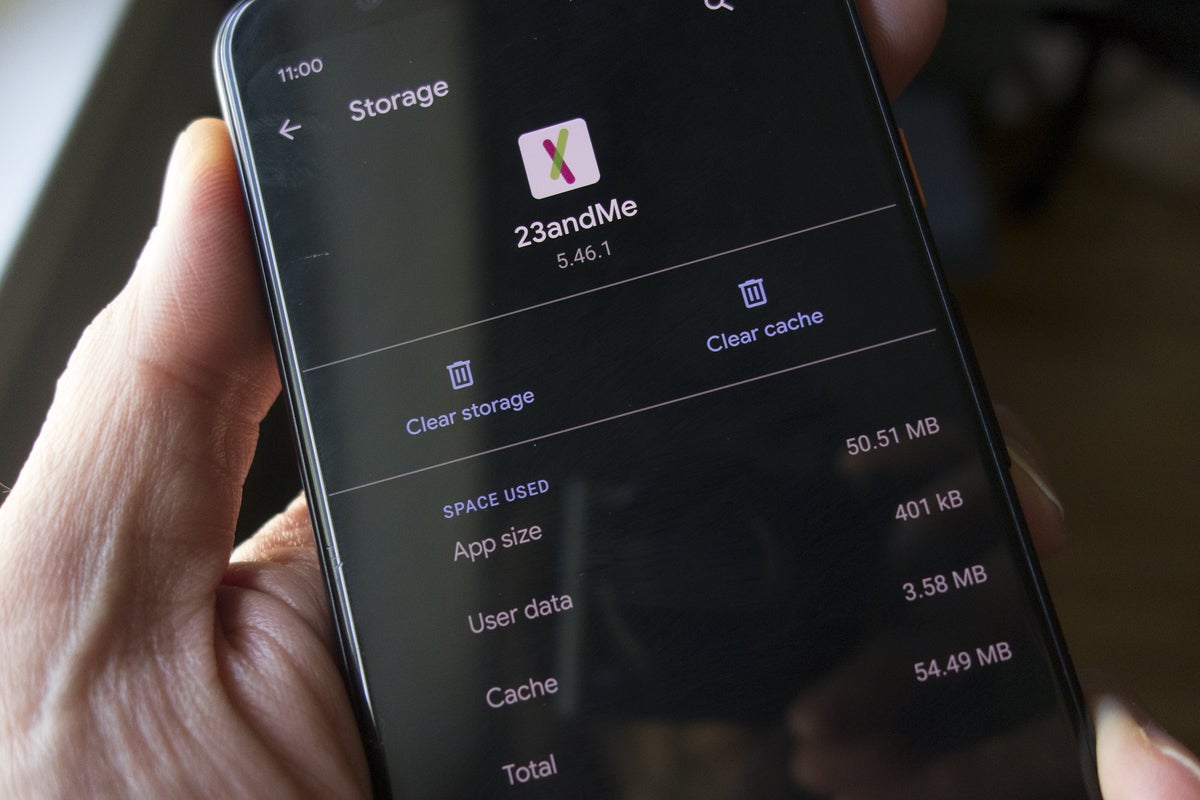 Michael Simon/IDG
Michael Simon/IDG Clearing out cache won't salvage a ton of infinite at once but it will add up.
If y'all dig into the Apps storage setting screen and tap on an individual app, you'll notice that each app has its own stash of "cached" data—anywhere from a few kilobytes to hundreds of megs, or fifty-fifty more. These caches of data are essentially only junk files, and they can be safely deleted to gratuitous up storage space. Select the app you want, and then the Storage tab and, finally theClear Cache button to take out the trash.
Tame your Chrome browser
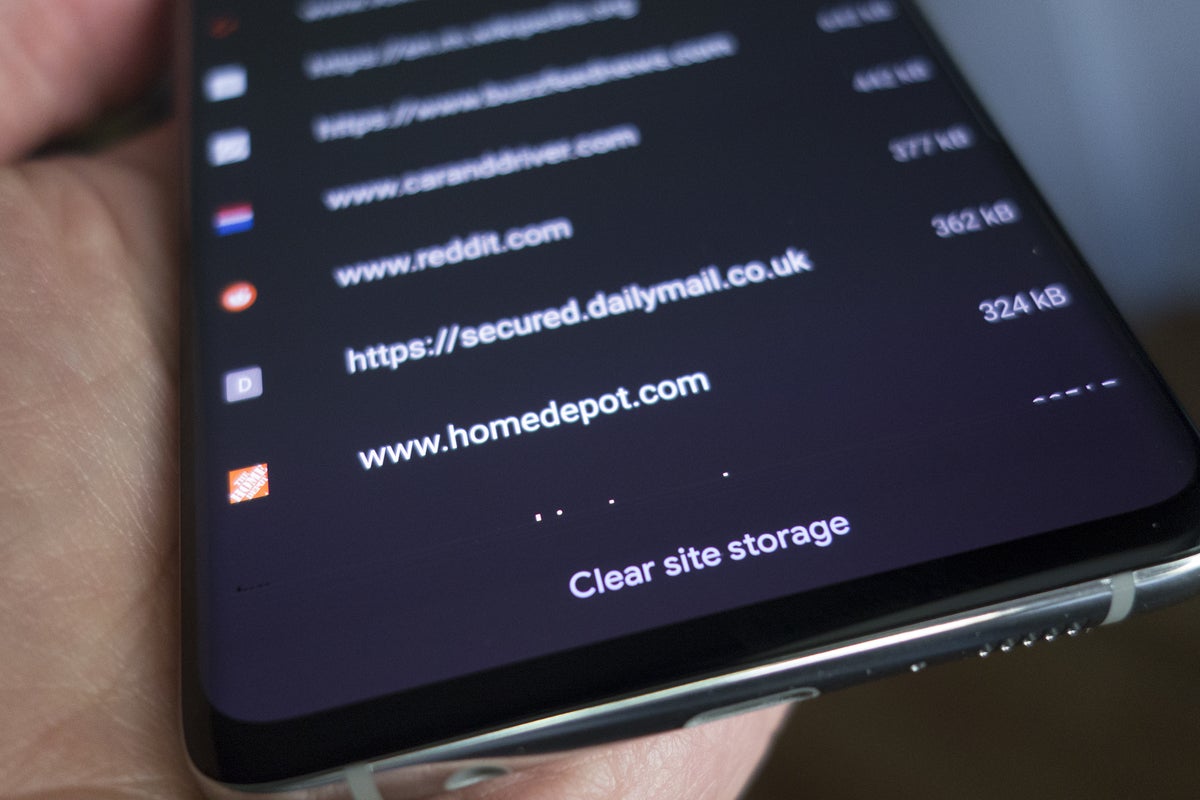 Michael Simon/IDG
Michael Simon/IDG Chrome can use up a scrap of your telephone's space.
I of the biggest groundwork abusers of your phone's infinite is a web browser. Each time y'all visit a site, information technology stores a fiddling chip for faster loading, and they tin can add up over fourth dimension. To bring things back down to size, open up Chrome on your Android phone, tap the menu in the top right corner, and open Settings. Then go to Site Settings and scroll downwards to Storage. At the bottom of the screen, you'll see a Clear site storage option. Tap it and y'all might complimentary up a couple of hundred megabytes.
Make clean up your Downloads
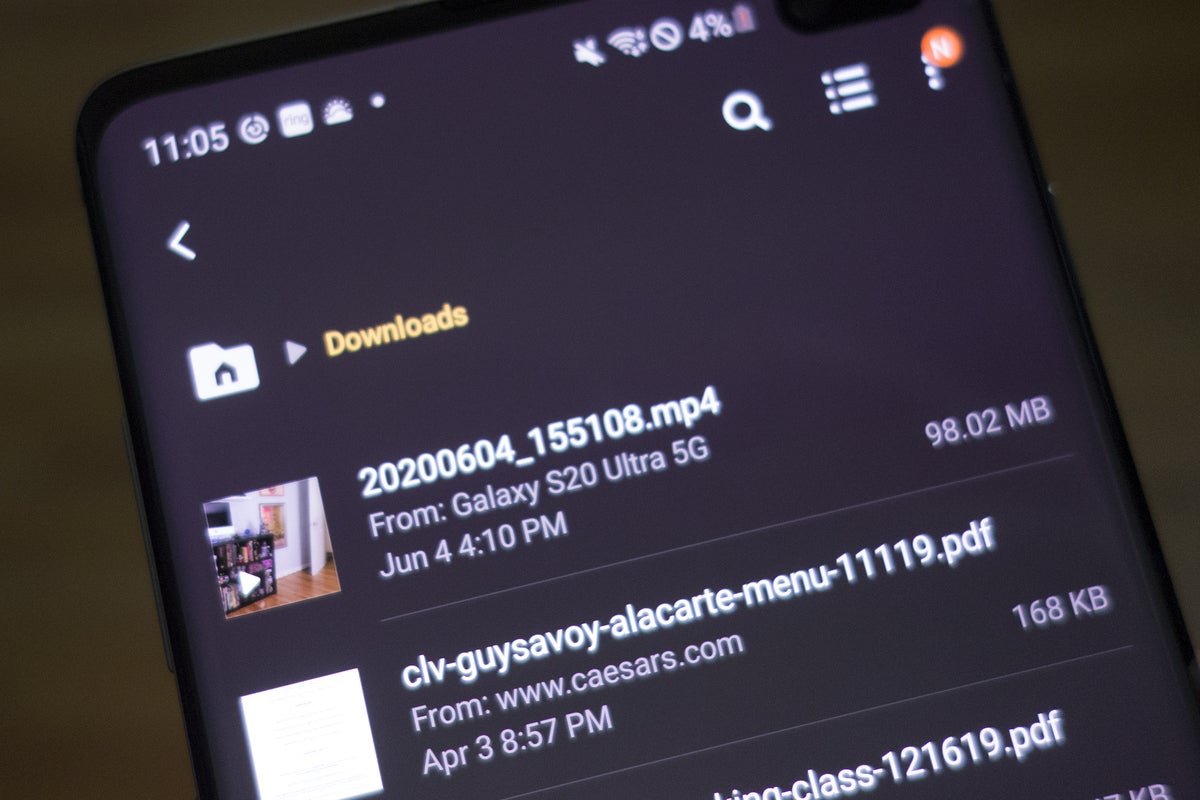 Michael Simon/IDG
Michael Simon/IDG Your phone saves everything you lot've e'er downloaded so you might need to articulate it every once in a while.
Just like on a PC or a Mac, your Android device has a Downloads folder. You'll discover inside the Files app on most phones—though it's called My Files on Galaxy phones—and It's a favorite hideout for miscellaneous junk files downloaded from the web or another app. When y'all detect it, the three-line carte du jour icon in the top corner of the screen and sort the list of downloads by size, and so take a look at what'southward hogging the near storage space. Then simply tap and agree to select the ones you don't want and trash them.
Dump photos that are already backed up
One of the all-time features of Google's Photos app is its ability to back upward your entire photo library to your online Google account. Once your snapshots are safely backed upwardly, Photos can zap any locally stored images to free up more infinite. Open the Photos app, tap the three-line menu button in the top left corner of the screen, then tap Free upwardly space. The Photos app will permit y'all know how many pictures it can delete from local storage and how much space you'll save. Tap OK to pull the trigger.
Note: If you lot're using the "High quality" setting for unlimited but lower-resolution deject storage of your backed up photos, continue in listen that the "Free up device storage" feature will delete your full-resolution originals. Make certain you've stored them elsewhere before you tap the OK button.
Manage downloaded music, movies, and podcasts
The biggest space suckers on your Android phone are media files. Those albums that you downloaded for a camping trip or a movie for a long plane ride that you simply forgot about can eat upward lots of data. Thankfully they're easy to find and remove. First, caput over to the Storage tab in Settings and cheque the Sound and Video folders to see if there are whatsoever files that can be deleted.
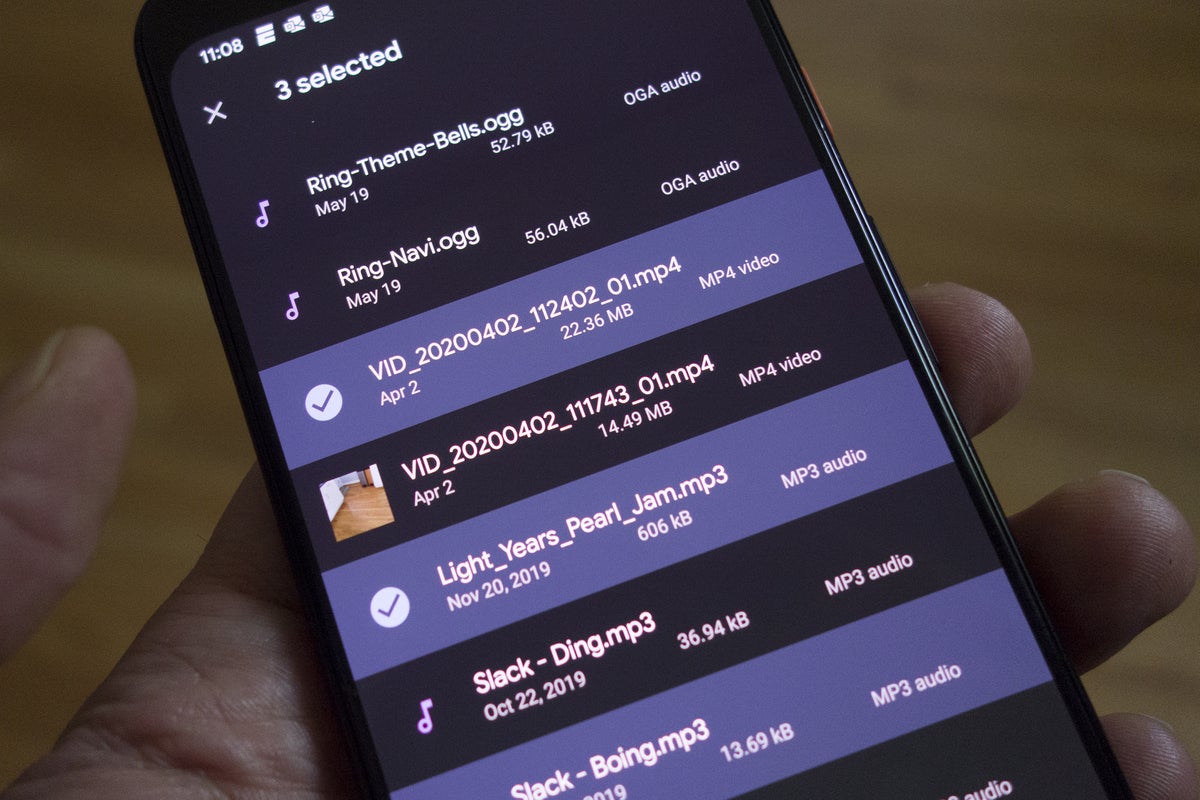 Michael Simon
Michael Simon Sound and video files can exist huge infinite suckers.
You'll besides want to bank check your individual streaming apps for any downloaded files. That includes Spotify, Netflix, YouTube Music or any other app you apply since files may be contained within the app itself.
Erase offline areas in Google Maps
Downloading a map in the latest version of the Google Maps app is a great way to navigate when your device is offline, especially at present that both searching and driving directions are supported.
But those searchable offline "areas" come at a cost: storage space, and potentially lots of information technology. Indeed, a single offline map can eat more than a gigabyte of storage depending on the size of the expanse.
You lot can check how much space your offline maps have staked out by tapping the 3-line bill of fare button in the top left corner of the main Google Maps interface, and so borerOffline. The storage used past each offline map is displayed below its name. Tap the map and tap Delete to reclaim its storage space.
Unload your to the lowest degree-used apps
I love the fact that I can download and install Android apps to my devices remotely from a desktop web browser. The downside? My Android handsets tend to exist overstuffed with likewise many apps, many of them used just in one case (or even never).
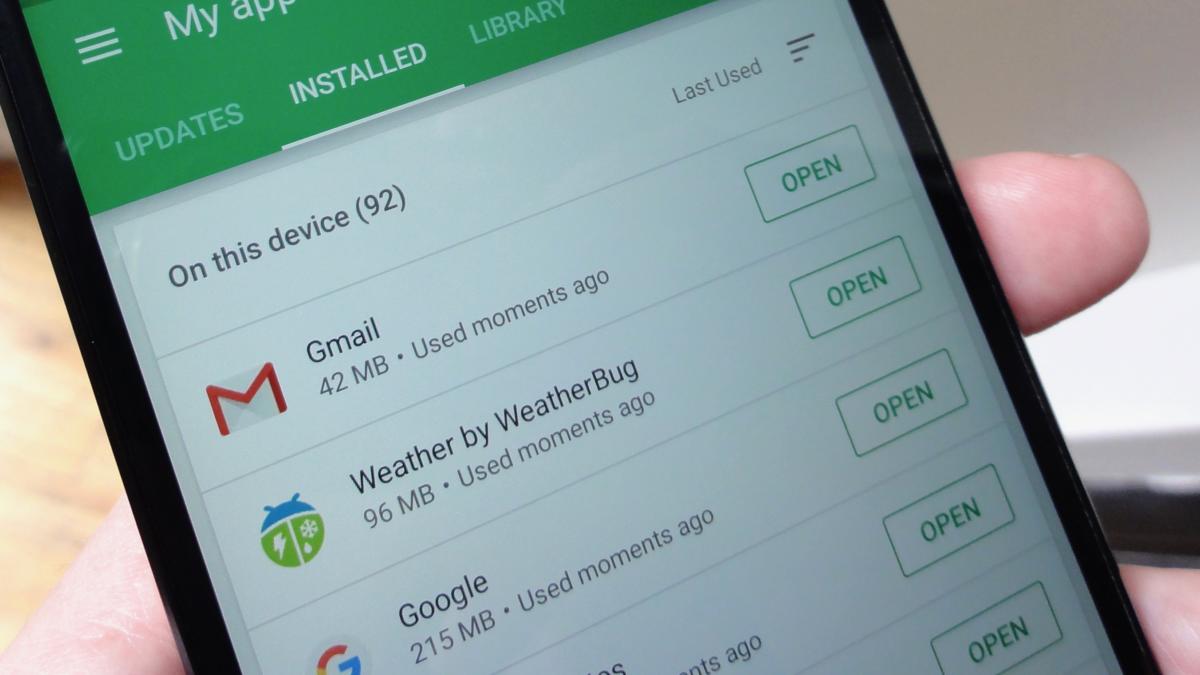 Ben Patterson / IDG
Ben Patterson / IDG Yous can find out which apps y'all utilize the least with assist from the Play Store app.
The solution, of course, is to delete some of those apps—ideally, the ones you use the least. In that location are also several apps that can runway your app usage and tell you which apps you're using the least, among them: App Usage, App Tracker, and QualityTime. But the best guess of the apps you lot don't desire is you. You can either browse your app drawer to discover whatsoever apps you don't need anymore, or cheque out your library in the Play Store.
To observe a list of everything on your phone, open the Play Store app, tap the iii-line bill of fare button in the pinnacle right corner of the screen, tap My apps & games, and so tap the Installed tab. From there, tap the Manage your apps tab. On the next page, you'll meet a list of your apps sorted past how often yous employ them and y'all can easily delete the ones you lot don't need anymore.
If you're lucky plenty to have a phone that'southward been updated to Oreo, Google has built in some great tools for tracking and managing your storage limits. Head over to the Setting app and tap the Storage tab. Inside y'all'll notice a handy rundown of everything that's taking up infinite on your phone, just like on Nougat. But in Oreo, you take more command over your files. Tap on whatever of the sections and you'll run across a listing of related apps and how much space they're using. Tap again, and yous'll be able to articulate anything within by selecting the "Free Storage push button. Just keep in listen that this will articulate any files being aid inside the app.
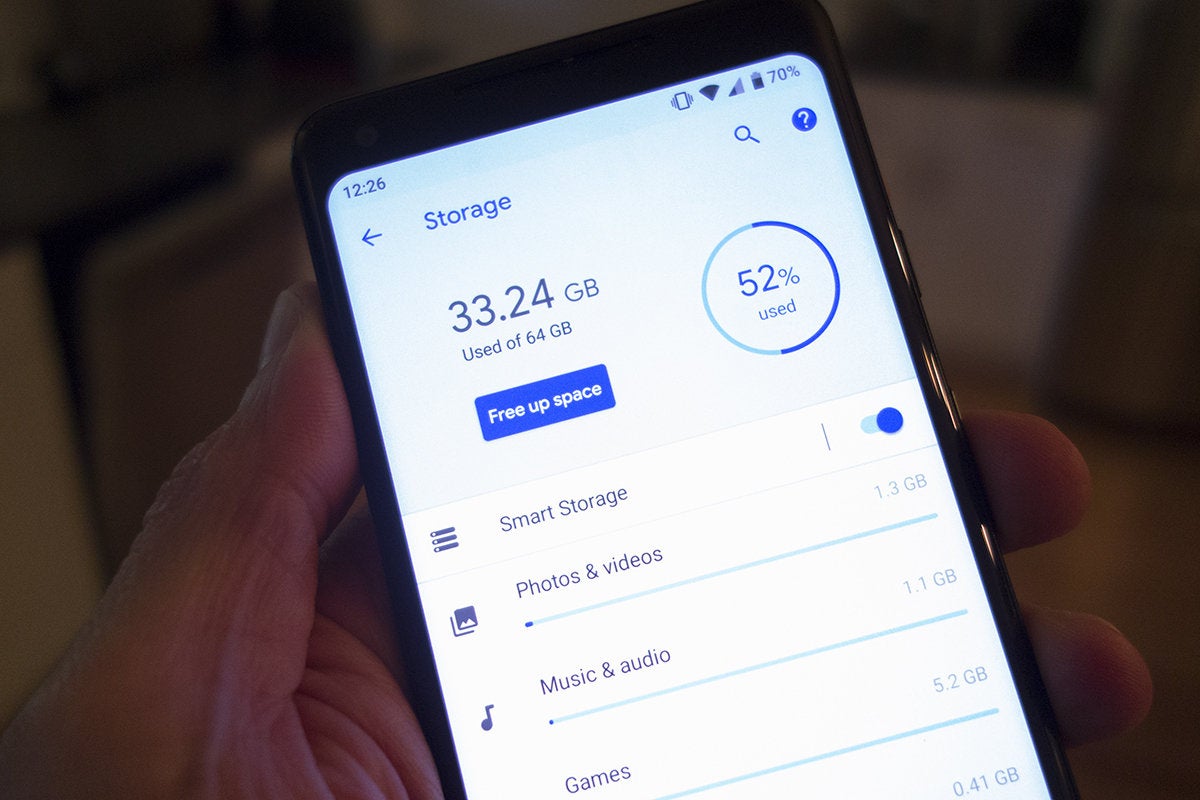 Michael Simon/IDG
Michael Simon/IDG The storage director in Android Oreo will help yous see exactly what'southward eating your phone's gratis space.
You'll also notice a new "Costless up space" button at the peak of Oreo's storage manager. Tap information technology and yous'll see a list of your downloads and infrequently used apps, too as an selection to clear whatever photos and videos that have already been backed up to the cloud. It'south essentially a shortcut, but it's a handy one.
Plow on smart storage
Oreo includes a new toggle called Smart Storage that can piece of work wonders without needing to do a matter. Flip it on, and your phone will automatically clear out the biggest space-stealing culprit: photos and videos.
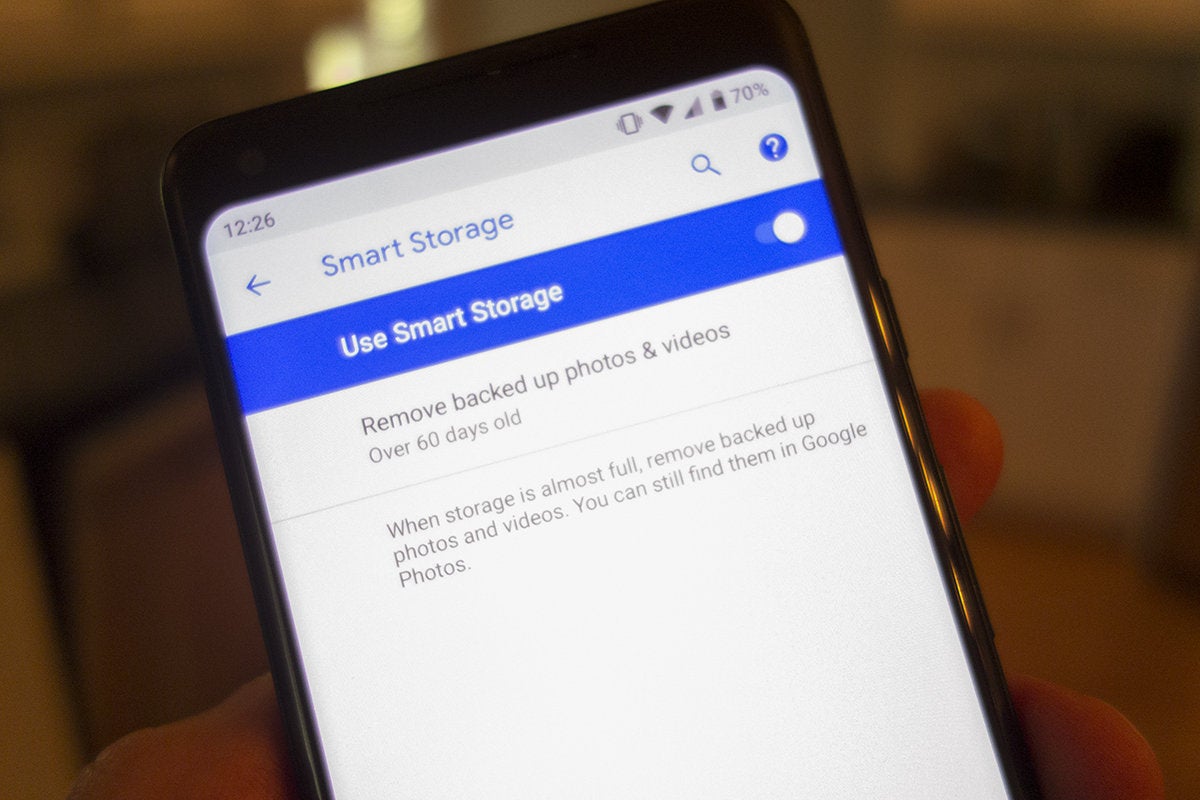 Michael Simon/IDG
Michael Simon/IDG Android Oreo's Smart Storage can complimentary up infinite without your needing to lift a finger.
Since nosotros all forget to clear out our photograph libraries regularly, you can choose to automatically remove backed-up photos and videos after 30, lx, or 90 days, making sure you phone isn't blimp with duplicate photos.
Get an SD menu
Virtually every Android phone y'all can buy in 2018 has a slot for expandable storage, so yous'll exist able to double, triple, and quadruple the space on your phone for just a few bucks. You'll want to get a micro SD card from Samsung or SanDisk in at to the lowest degree 32GB capacity. Prices per gigabyte subtract substantially as the capacity increases, and so you should buy the biggest card that yous can afford. As a very full general rule, around $0.xl per gigabyte is a good toll.
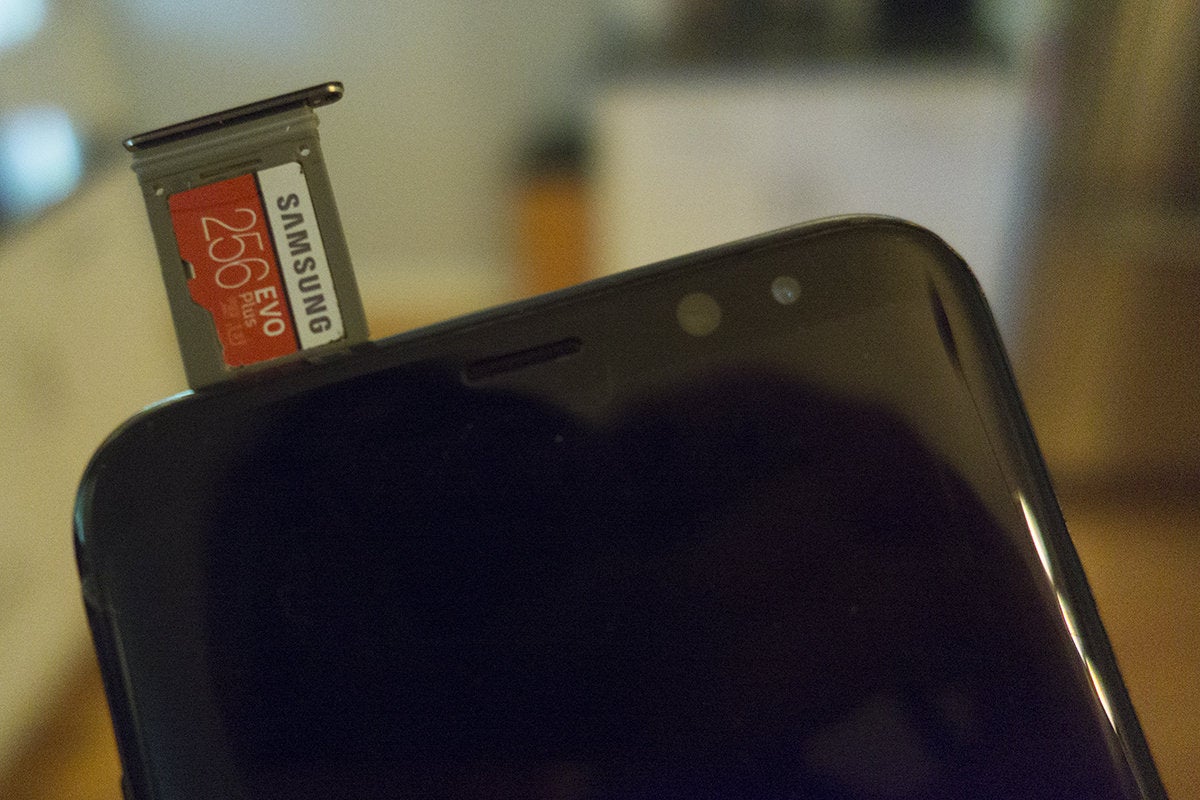 Michael Simon/IDG
Michael Simon/IDG The best fashion to complimentary up space on your Android phone is to add more of information technology.
Once you select the size you want, installing it is a snap. There's no formatting to worry about, just pop open your SIM card slot and slide in the SD carte. So, you lot'll exist able to shift files and apps onto the carte equally needed to free up precious internal infinite. Most phones support SDcards, thought Google'south Pixel phones and sure Galaxy phones do not.
Take advantage of Google Drive
Google gives 15 gigs of free cloud storage with every account, so you might equally well use information technology. Anything inside your Downloads or Files app can be jettisoned to your Google Drive by borer the card button in the superlative correct corner and choosing "Send to…" This will open the share canvass, where you can selectSave to Bulldoze to choose which folder to add it to. And so you can delete information technology from your phone without losing information technology forever.
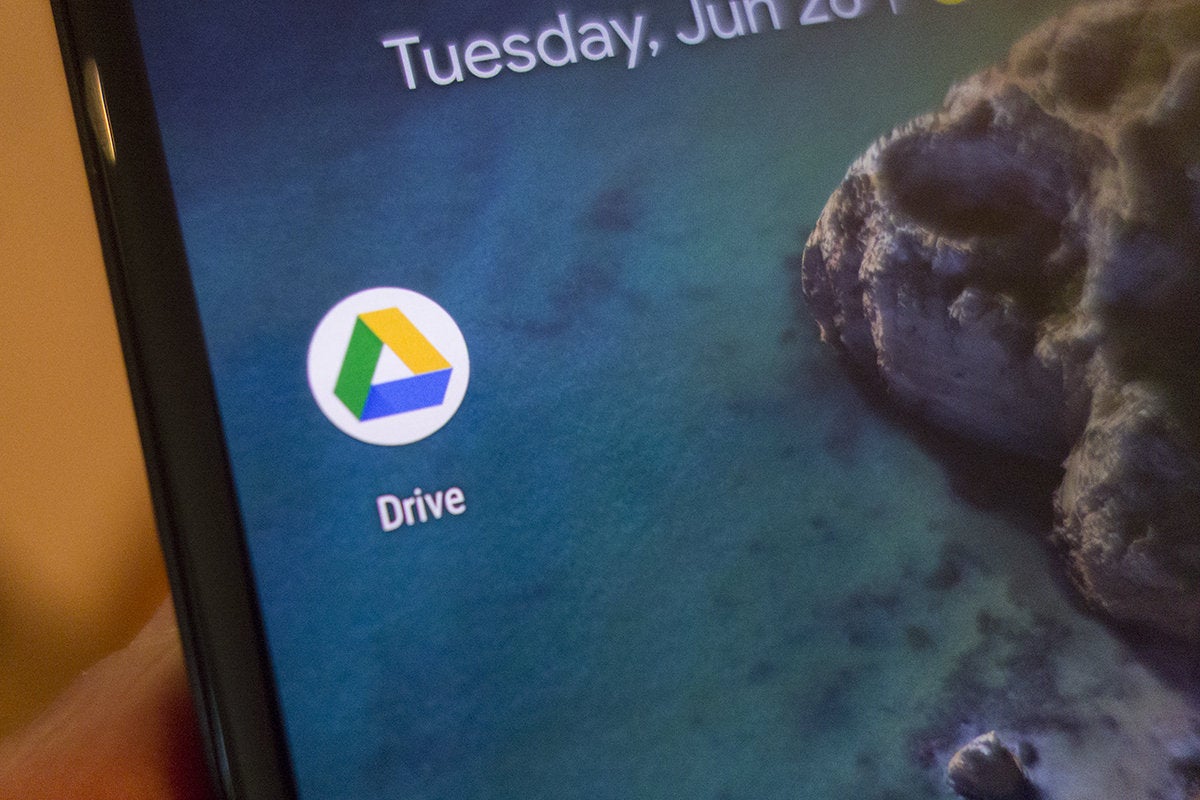 Michael Simon/IDG
Michael Simon/IDG Your phone comes with 15GB of free space that you might not exist utilizing.
And if 15 gigs aren't enough, you tin upgrade to Google I and increase your storage by an gild of magnitude for but a few bucks a calendar month. For but $ane.99 per month, yous'll go an extra 100GB of space, and a buck more than ($2.99/calendar month) volition double it to 200GB.
Is It Safe To Delete Cached Data On Android,
Source: https://www.pcworld.com/article/415122/clear-space-overstuffed-android-phone-chrome-cache-downloads-storage.html
Posted by: shiresplesn1976.blogspot.com


0 Response to "Is It Safe To Delete Cached Data On Android"
Post a Comment